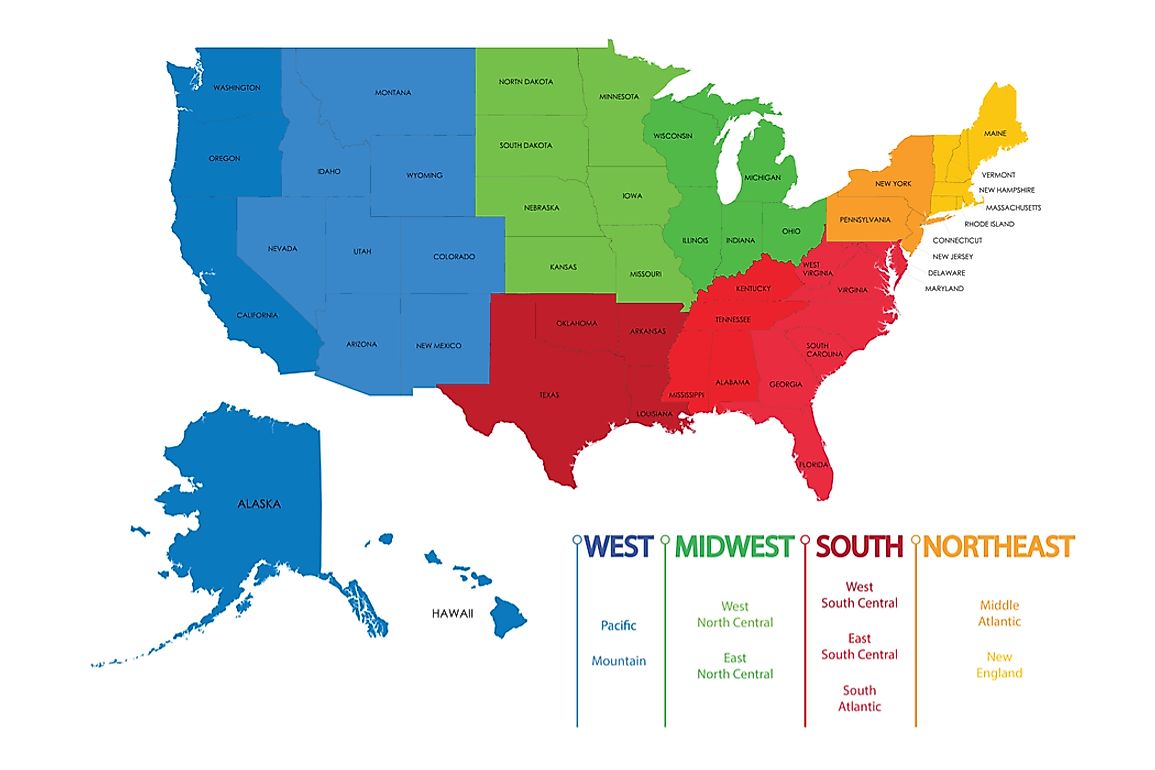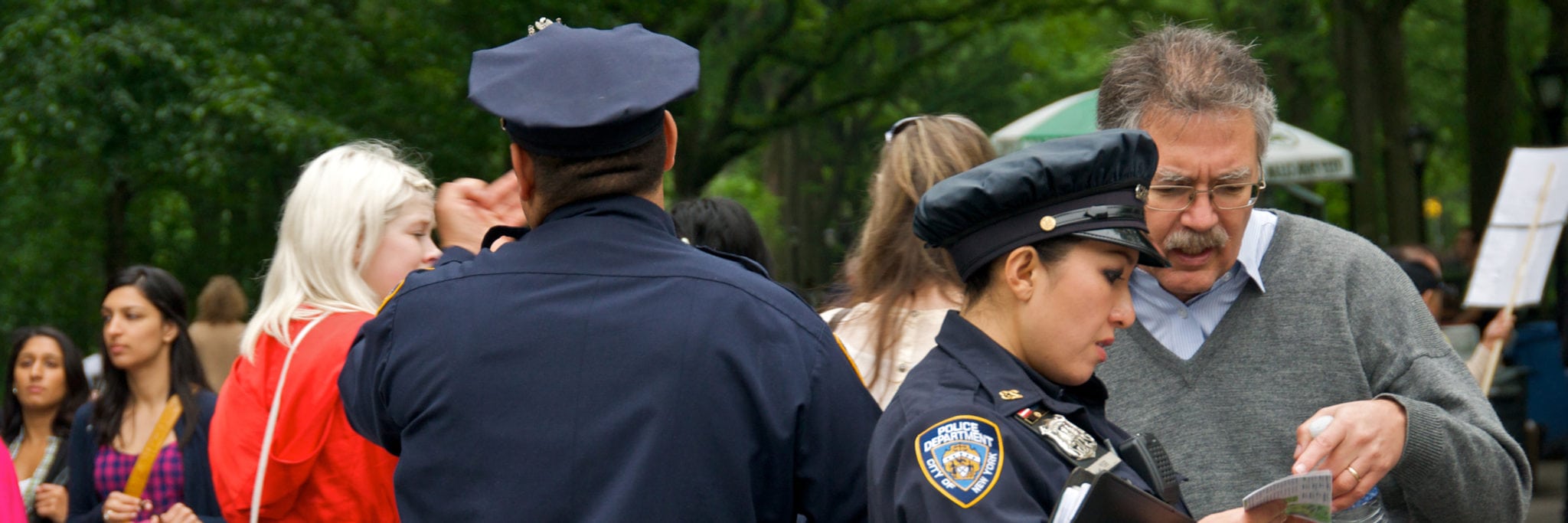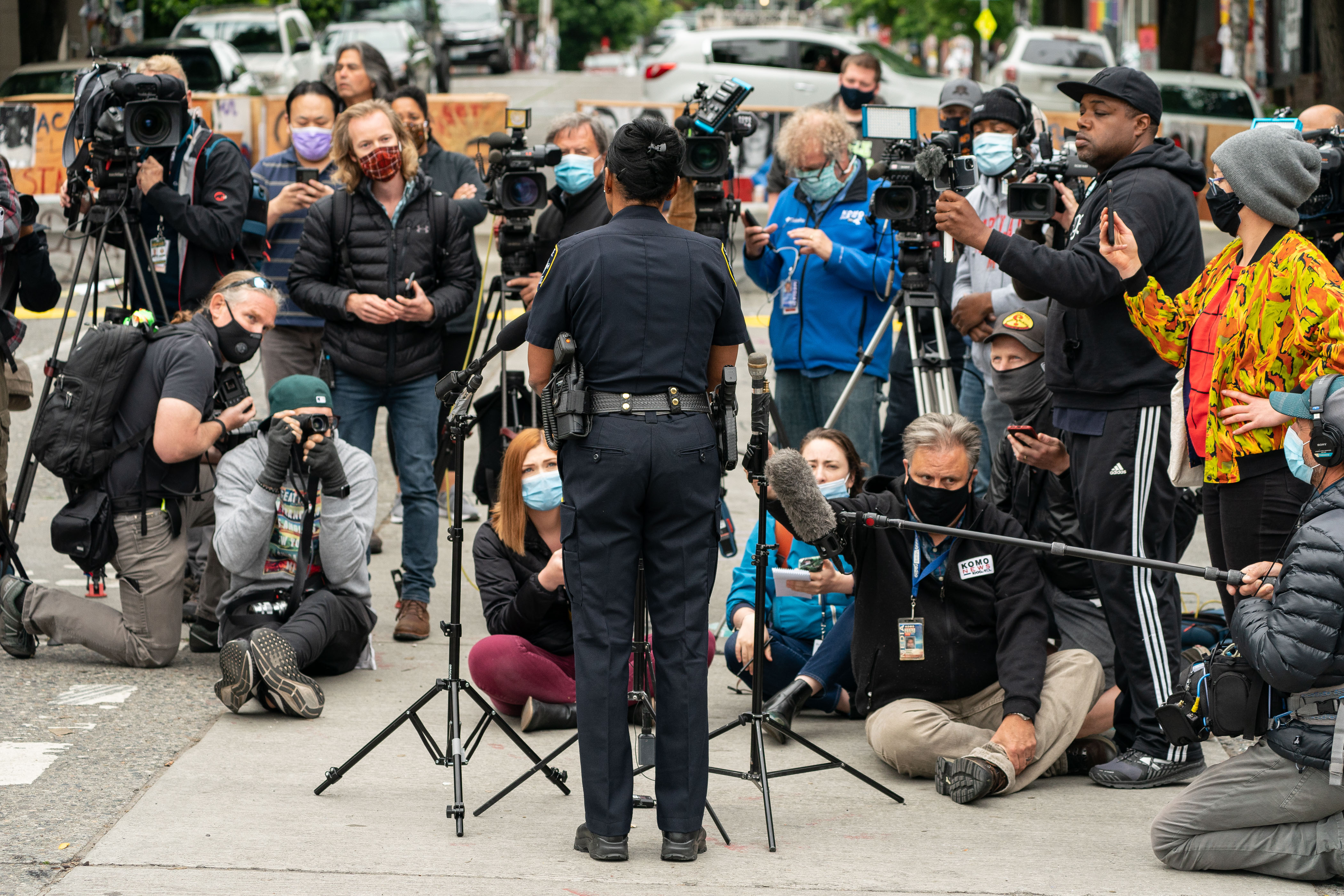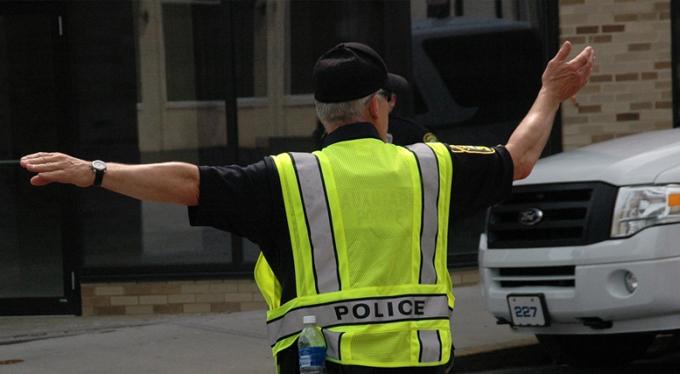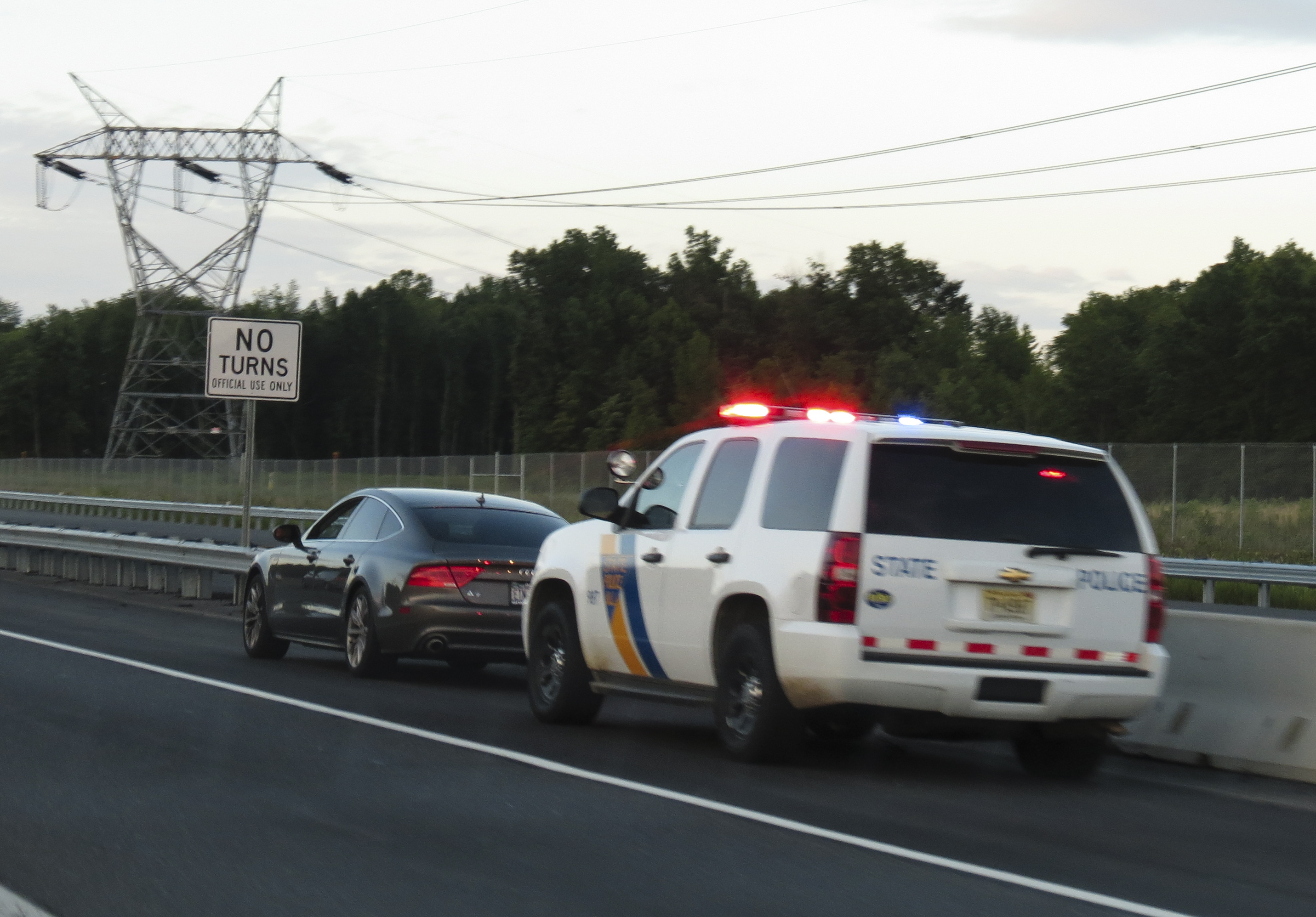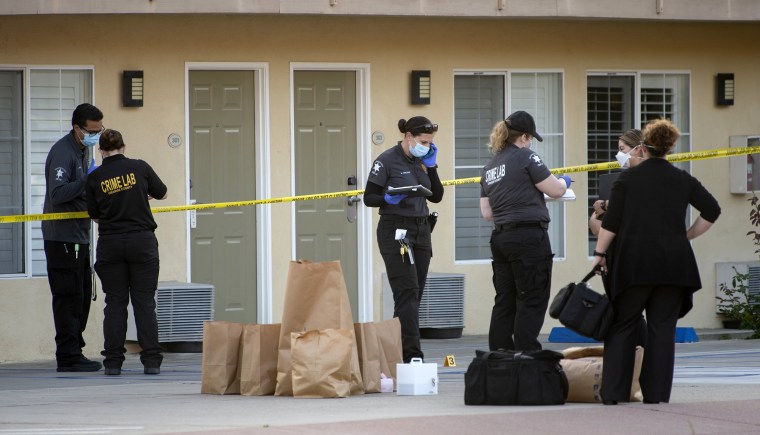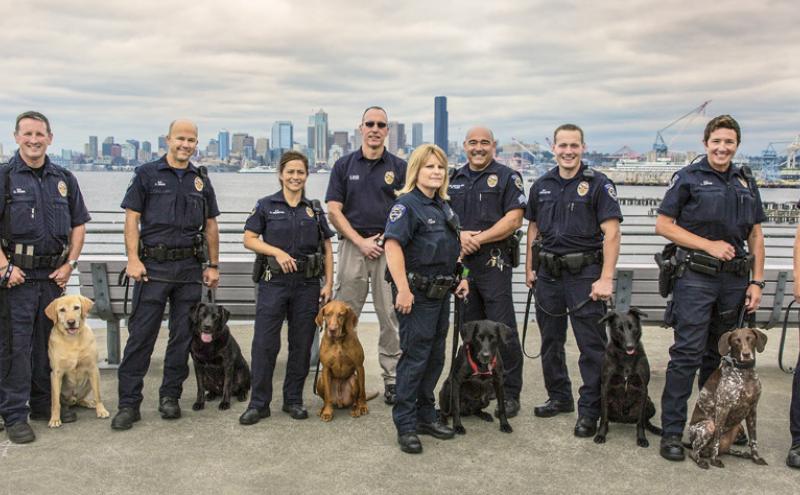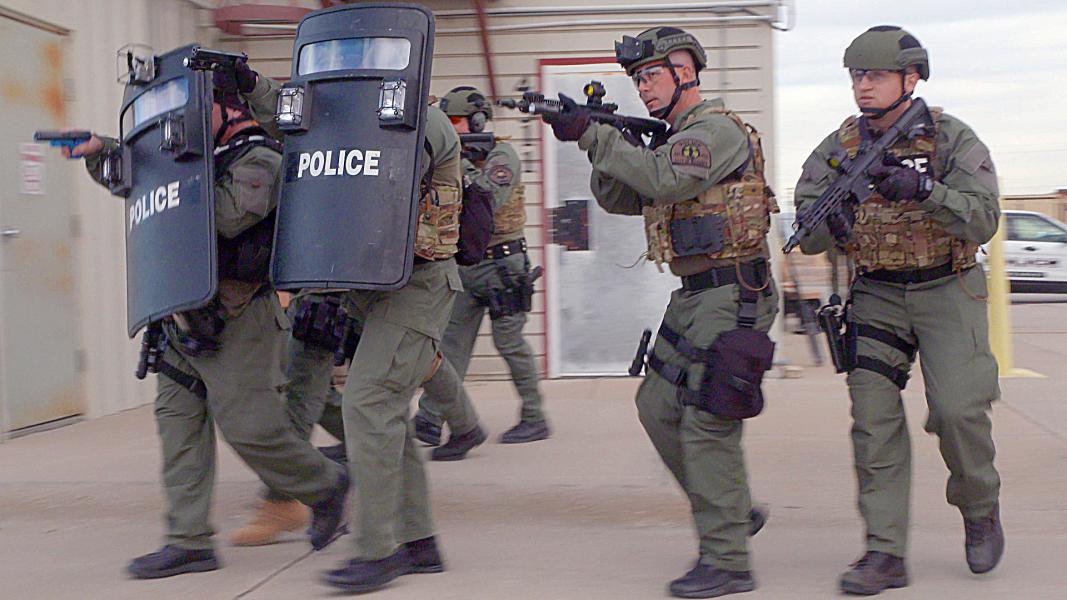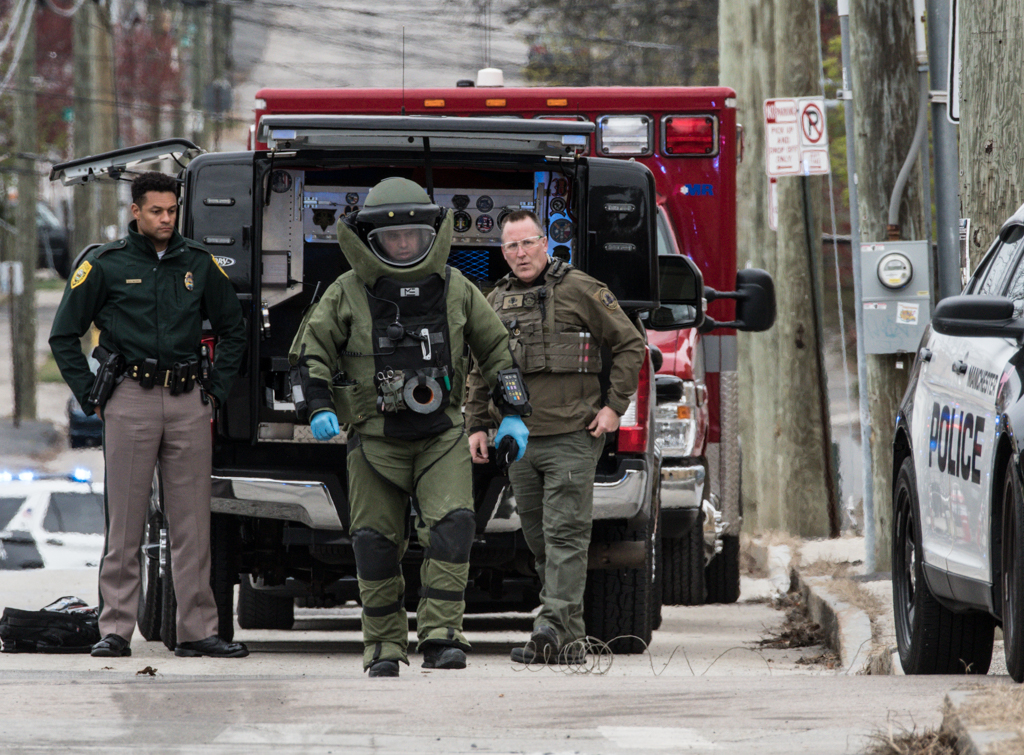- Joined
- Sep 11, 2019
- Messages
- 78
- Points
- 18
So you really want to play a police officer. Shouldn’t be too hard, right? Grab your cuffs and duty pistol, hop in your police cruiser, make some arrests and bash some deadheads. Protect and serve, right? … In reality being a cop is a lot more complicated. Big shocker, I know. The events of the last few years should be enough of an indicator of that. Even when roleplaying a cop in decades past, there’s always some level of oversight to be aware of, whether it’s your sergeant, the Chief, or the people you’re supposedly serving.
This guide is directed towards those aiming to create a law enforcement character and give some ideas on nuance and how to flesh them out. I will also try to cover some different agencies, such as State Troopers, SWAT, and the DEA.
Note that this guide focuses largely on United States Law Enforcement, and is not an all encompassing guide to all intricacies of the police in or outside of the U.S. Laws vary federally, at the state level, and at the county and city level, and as such it is recommended that one also look into some of the respective laws based on where the character you are roleplaying is situated.
Alright, let’s begin.
An Overview:
1 - The Basics
════════════════════════════════════════════════════════════
Preface - Like any other job, law enforcement officers (LEOs) are people at the end of the day. The world has seen everything from the by-the-books officer that follows procedure and law to a tee and does everything for the good of the public to the corrupt scumbag pig that wields authority for their own gain to the detriment of their fellow officers and society as a whole, and everything in between. You can play a lawful good cop and you can play a chaotic evil cop. However it is essential to remember that your character is beholden to the rules of the world, their police department, and their fellow officers. Usually it is extremely difficult to play a good cop realistically; more often than not, ‘good’ LEOs that don’t side with their fellow officers in the field, during internal investigations, or in court may find themselves snubbed for promotion, transferred to a less desirable beat or job, or even suspended or removed from the force. Keep this in mind when creating your character.
════════════════════════════════════════════════════════════
2 - What you SHOULD know
════════════════════════════════════════════════════════════
This guide is directed towards those aiming to create a law enforcement character and give some ideas on nuance and how to flesh them out. I will also try to cover some different agencies, such as State Troopers, SWAT, and the DEA.
Note that this guide focuses largely on United States Law Enforcement, and is not an all encompassing guide to all intricacies of the police in or outside of the U.S. Laws vary federally, at the state level, and at the county and city level, and as such it is recommended that one also look into some of the respective laws based on where the character you are roleplaying is situated.
Alright, let’s begin.
An Overview:
- 1 - The Basics
- 1.1 - Roles within Government and Society
- 1.2 - Federal, State, and Local, Oh My! (Agencies Too)
- 1.3 - Rights, Rights, and Rights (Citizen Rights and the Law)
- 1.4 - Police Organizational Hierarchy
- 1.5 - Diversity in the Force
- 2 - What you SHOULD know
- 2.1 - Police Academy!
- 2.2 - Your Division and Unit!
- 2.3 - Your Equipment and You, Police Style
- 2.4 - Communication, Radio Codes, and Ten Codes
- 2.5 - D.O.A.
- 2.6 - Clinking the Big House and into the Slammer
- 3 - Of Hearts and Minds
- 3.1 - Location, Location, Location
- 3.2 - To Serve and Protect
- 3.3 - Bad Publicity is Good Publicity?
- 3.4 - I Fought The Law (And the Law Won)
- 3.5 - Blue on Blue
- 4 - Police Function and Operations
- 4.1 - Patrol
- 4.2 - Traffic
- 4.3 - Investigation
- 4.4 - Services
- 4.5 - Riot and Crowd Control
- 4.6 - Special Operations
- 5 - Authority, Accountability, and Controversy
- 5.1 - The Blue Code of Silence
- 5.2 - Killing in the Name
- 5.3 - No Need to ‘Protect and Serve’
- 5.4 - Warrant or No Warrant?
- 5.5 - Oversight and Accountability
1 - The Basics
════════════════════════════════════════════════════════════
Preface - Like any other job, law enforcement officers (LEOs) are people at the end of the day. The world has seen everything from the by-the-books officer that follows procedure and law to a tee and does everything for the good of the public to the corrupt scumbag pig that wields authority for their own gain to the detriment of their fellow officers and society as a whole, and everything in between. You can play a lawful good cop and you can play a chaotic evil cop. However it is essential to remember that your character is beholden to the rules of the world, their police department, and their fellow officers. Usually it is extremely difficult to play a good cop realistically; more often than not, ‘good’ LEOs that don’t side with their fellow officers in the field, during internal investigations, or in court may find themselves snubbed for promotion, transferred to a less desirable beat or job, or even suspended or removed from the force. Keep this in mind when creating your character.
1.1 - Role Within Government and Society
With a country as big and stratified as the United States, it’s a given that it has a police force that is not only just as big, but also just as divided. As of 2023, there are 17,985 police agencies ranging from federal law enforcement agencies to small town police departments. Over 800,000 sworn law enforcement officers serve across the country, with departments ranging in size from the NYPD’s massive 34,000 strong police force to a number of small town departments consisting of only one full-time officer of the law. Your PD’s location will be an important factor on not just your officer, but the culture of the department and their capabilities.

Law enforcement serves alongside the courts and corrections as a major part of the criminal justice system. Working in tandem with courts and corrections, LEOs are largely responsible for preserving public safety and investigating and arresting those that break the law. Police agencies have three primary functions: Order maintenance, law enforcement, and service.
There are four common styles of policing in the United States:
With a country as big and stratified as the United States, it’s a given that it has a police force that is not only just as big, but also just as divided. As of 2023, there are 17,985 police agencies ranging from federal law enforcement agencies to small town police departments. Over 800,000 sworn law enforcement officers serve across the country, with departments ranging in size from the NYPD’s massive 34,000 strong police force to a number of small town departments consisting of only one full-time officer of the law. Your PD’s location will be an important factor on not just your officer, but the culture of the department and their capabilities.

Law enforcement serves alongside the courts and corrections as a major part of the criminal justice system. Working in tandem with courts and corrections, LEOs are largely responsible for preserving public safety and investigating and arresting those that break the law. Police agencies have three primary functions: Order maintenance, law enforcement, and service.
- Order Maintenance - Keeping the peace and preventing behavior that may disturb that peace. This is usually handled at discretion of the responding officer and can escalate or de-escalate accordingly.
- Law Enforcement - Police exercise these powers where the law has been violated and a suspect must be identified and apprehended. Examples where this is necessary include robbery, murder, burglary, and assault.
- Service - Police may provide services to the public as needed, such as first aid, providing directions or information, or guiding disoriented individuals. Many calls for police assistance do not involve crimes, and citizens may call upon them for aid in other situations, such as roadside assistance or helping find lost property or pets.
There are four common styles of policing in the United States:
- Traditional Policing Model/Military Style - With this style, operations are largely based on crime management and response, wherein they respond only to reported criminal activity. Under this direction, police believe they are the first line of defense against a criminal and that they’re in a peace-time war against criminals, and any tactic or method used is justified, and that crime can be controlled with punishment. Since the 1960s, this style of policing has become more and more scrutinized. Though elements of this persist today, policing styles have largely shifted in different directions.
- Watchman Style - With this style, emphasis is placed upon the maintenance of order over law enforcement. It is commonly found in communities with a declining industrial base and a blue collar, mixed racial populace. Compared to others, this style of policing is less proactive; minor offenses may be tolerated, overlooked, or even ignored on a variety of social, legal, and cultural grounds so long as public order is maintained. Conversely, serious offenses are vigorously suppressed. Preserving order and protecting people take precedence over arrest rates, though the broad discretion LEOs have under this style can result in discrimination or preferential treatment by some officers.
- Legalistic Style - With this style, emphasis is placed on law enforcement and professionalism over preservation of order. It is commonly found in reform minded cities with mixed socioeconomic composition. LEOs are encouraged to judge situations from a legal standpoint and act accordingly, leading to a high number of arrests. Officers are encouraged to build technical and administrative skills and generate a large number of arrests and citations, with crime preventative measures neglected. This style can come off as cold and uncaring towards the public.
- Service Style - With this style, law enforcement and order maintenance are both considered. It is commonly found in suburban, middle-class communities, wherein crimes are generally less common, freeing LEOs to conduct service and traffic functions. As this style is more driven by public opinion, officers may be more lenient with arrests, sometimes offering alternatives where applicable, such as drug/alcoholic treatment centers or training institutions.
1.2 Federal, State, and Local, Oh My! (Agencies Too)
As stated prior, the United States is a large nation and has over 17,000 police organizations. Like the American government, these are divided at the federal, state, and local levels, with some special agencies caught in between to make things a little more complicated. Let's start from the top!
Federal Law Enforcement - Federal law enforcement includes both federal police and 73 federal law enforcement agencies that are authorized to enforce laws at the federal level. Between these, the federal government employs roughly 137,000 full time personnel. The majority of these employers are under the Department of Justice and (post 2002) the Department of Homeland Security (If curious what agencies were incorporated into the DOHS prior to 2002, look here).
Federal LEOs have jurisdiction in all states and U.S. Territories. However it is important to note that in matters of fugitives, federal police are generally not authorized to interfere with non-federal crimes in a state unless the fugitive has fled across state lines.
Generally federal LEOs are limited by the U.S. Code in what they can and can’t enforce, though since the PATRIOT Act of 2001, their investigative powers have grown considerably. The most common functions of federal officers are: criminal investigation/enforcement (68%), corrections (25%), and police response/patrol (9%)
Below are some of the larger and more commonly known federal law enforcement agencies and their functions. For a full list, please look here.
State police perform functions that do not fall within the jurisdiction of county sheriffs, such as enforcing traffic law on highways and interstates, overseeing security at government buildings, protecting the governor, and supporting local police. American territories including Guam, Puerto Rico, and American Samoa also have police departments with territory-wide authority.
Furthermore, most states have separate policing agencies, including the State Bureau of Investigation (SBI, state equivalent to FBI), State Bureau of Narcotics (SBN, state equivalent to the DEA), Marine Patrol, and Game Wardens.
County Police/Sheriffs - Upon reaching the county and local levels of government, wherein powers can vary widely depending on the state and even from county to county. In many cases, both sheriffs and county police operate in tandem to one another, usually with similar powers to enforce the law. Note that Sheriffs are elected officials by the public.
As stated prior, the United States is a large nation and has over 17,000 police organizations. Like the American government, these are divided at the federal, state, and local levels, with some special agencies caught in between to make things a little more complicated. Let's start from the top!
Federal Law Enforcement - Federal law enforcement includes both federal police and 73 federal law enforcement agencies that are authorized to enforce laws at the federal level. Between these, the federal government employs roughly 137,000 full time personnel. The majority of these employers are under the Department of Justice and (post 2002) the Department of Homeland Security (If curious what agencies were incorporated into the DOHS prior to 2002, look here).
Federal LEOs have jurisdiction in all states and U.S. Territories. However it is important to note that in matters of fugitives, federal police are generally not authorized to interfere with non-federal crimes in a state unless the fugitive has fled across state lines.
Generally federal LEOs are limited by the U.S. Code in what they can and can’t enforce, though since the PATRIOT Act of 2001, their investigative powers have grown considerably. The most common functions of federal officers are: criminal investigation/enforcement (68%), corrections (25%), and police response/patrol (9%)
Below are some of the larger and more commonly known federal law enforcement agencies and their functions. For a full list, please look here.
- Federal Bureau of Investigation (FBI) - Established in 1908, this agency employs around 35,000 employees. The domestic intelligence and security service of the US and its principal federal law enforcement agency. They specialize in counterterrorism, counterintelligence, and criminal investigation in support of their mission to “Protect the American people and uphold the Constitution of the United States.” They have 56 field officers in major cities across the country with over 400 resident agencies in smaller cities and areas. The FBI fields their own police force and academy, as well as local FBI SWAT teams and the elite Hostage Rescue Team (HRT)
- Central Intelligence Agency (CIA) - Established in 1947, this agency employs around 21,500 employees. The foreign intelligence service of the US government. The CIA technically has no law enforcement function, focusing on overseas intelligence gathering and limited domestic intel gathering. It conducts covert and clandestine operations at the behest of the president and offers support to foreign political groups and governments. It has been involved in several regime changes, assassinations, and other controversies both domestically and abroad. CIA Security Protective Service Agents are considered police officers and have the capability to enforce federal laws, but have a relatively small number of personnel.
- Drug Enforcement Administration (DEA) - Established in 1973, this nation employees around 10,000 people, with around 5,000 special agents. The DEA is the lead agency for domestic enforcement around controlled substances and drugs. It can pursue investigations both domestically and abroad (with cooperation of foreign governments and law enforcement).
- Bureau of Alcohol, Tobacco, Firearms, and Explosives (ATF) - Established in 1972, this agency employs ~5,300 employees. The ATF’s responsibilities include the investigation and prevention involving unlawful use, manufacture, and possession of firearms and explosives; arson and bombings; and illegal trafficking and tax evasion of alcohol and tobacco products. They also regulate the sale, possession, and transport of firearms, ammunition, and explosives in interstate commerce.
- U.S. Border Patrol (USBP) - Established in 1924, this agency employs over 20,000 agents. The USBP is responsible for securing the borders of the United States, patrolling the borders to Canada and Mexico and the coastal waterways along the Pacific coast, tip of Florida, and Puerto Rico. Of many law enforcement agencies, the USBP is amongst the most criticized for treatment of aliens, as well as corruption, deaths, assaults, and wrongful detention of both aliens and American citizens at the hands of USBP agents..
- U.S. Immigrations and Customs Enforcement (ICE) - Established in 2003, this agency employs more than 20,000 employees. ICE’s mission statement is to protect the U.S. from cross-border crime and illegal immigration that threatens national security and public safety. This includes preventing terrorism, combating illegal movement of people and goods, and customs violations. Unlike the USBP, ICE does not patrol American borders. ICE has several law enforcement divisions, with Enforcement and Removal Operations (ERO) the most contentious and public of their functions, removing undocumented non-citizens and fugitives from the country.
- U.S. Secret Service (USSS) - Established in 1865, this agency employs over 7,000 employees. The Secret Service is tasked with protecting the nation’s leaders and heads of state of visiting governments and safeguarding the financial and critical infrastructure of the nation. Secret Service special agent positions are highly competitive, with fewer than 150 agent trainees accepted each year.
- U.S. Coast Guard (USCG) - Established in 1790/1915, this branch employs over 40,000 active duty personnel and over 35,000 reservists, as well as over 8,000 civilian personnel. During peacetime, the Coast Guard operates under the Department of Homeland Security. With jurisdiction in both domestic and international waters, the USCG protects US borders and economic and security interests abroad and safeguards sea lines of communication and commerce of both US territorial waters and the Exclusive Economic Zone.
- National Park Service Law Enforcement Rangers - Established in 1916, this agency employs around 1,300 sworn rangers. Park Rangers have broad authority to enforce federal and state laws within National Park Service sites. Alongside normal law enforcement rangers, the National Park Service (NPS) employs special agents to conduct criminal investigations. Park Rangers can make arrests, execute search warrants, and testify in court. Alongside normal policing duties, rangers can offer emergency medical services, firefighting, and conduct search and rescue operations.
State police perform functions that do not fall within the jurisdiction of county sheriffs, such as enforcing traffic law on highways and interstates, overseeing security at government buildings, protecting the governor, and supporting local police. American territories including Guam, Puerto Rico, and American Samoa also have police departments with territory-wide authority.
Furthermore, most states have separate policing agencies, including the State Bureau of Investigation (SBI, state equivalent to FBI), State Bureau of Narcotics (SBN, state equivalent to the DEA), Marine Patrol, and Game Wardens.
County Police/Sheriffs - Upon reaching the county and local levels of government, wherein powers can vary widely depending on the state and even from county to county. In many cases, both sheriffs and county police operate in tandem to one another, usually with similar powers to enforce the law. Note that Sheriffs are elected officials by the public.
- County Police Duties - Typically in charge of typical police duties such as patrol and investigations. Depending on the county, they can be in full service, limited service, or restrictive service.
- Sheriffs’ Offices Duties - In many cases, Sheriffs handle serving papers and providing security to courts. They’re responsible for law enforcement, courts, and corrections at the county level, upholding county jails, ensuring the safety of courts, and jurisdiction to enforce laws. They also have responsibilities such as transporting prisoners, running crime labs, and collecting taxes as necessary.
- Municipal Police - In the U.S., municipalities are considered cities or towns, and these typically have their own police department separate from the county police or sheriffs. Based on the size of the city/town, the PD can range in size from one-officer agencies to NYPD’s 40,000 strong. They’re usually formed by merging multiple police departments to improve efficiency and better use resources as urban sprawl increases.
1.3 Rights, Rights, Rights!
"Did you know you have rights? Constitution says you do."
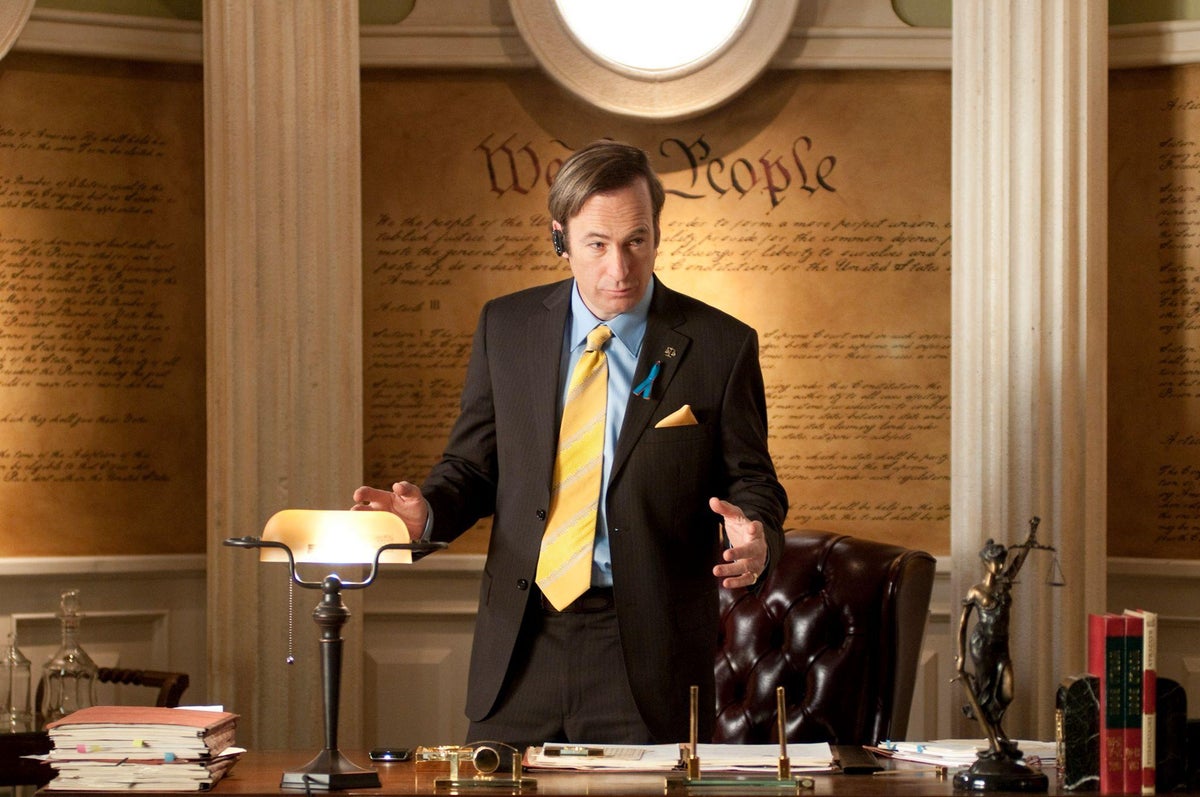
As one of the hot button topics of the last decade or so, it’s become common knowledge that in many cases, cops are liable to breach the rights of the citizens they’re supposed to protect and serve. In many cases, it’s clear that an officer knows exactly what rights the citizen has, but is banking that the citizen is uninformed or ignorant of such rights. Why is this? Sometimes it’s because the police have reason to suspect the individual, and hope that they will voluntarily offer some statement or trick them into doing this. Other times the cop is succumbing to some massive power trip.
Whatever the reasons may be, it’s important when playing law enforcement to have some basic understanding of the laws you’re working with. Please don’t think you have to read through federal or state statutes, though giving them a glance may help if you’re particularly dedicated. Either way, we’ll go into a quick summary below. If anything must be taken away from this section, it's that the police are not required to read your Miranda rights unless you are both in police custody and the police are interrogating and questioning you. Though some departments and officers read them on arrest as common practice, this is not universal.
Bill of Rights and Amendments to the U.S. Constitution - Since the Bill of Rights was ratified in 1791, twenty-seven amendments to the Constitution have been enacted. Relevant amendments to policing and law enforcement will be listed below, but the full list of amendments can be viewed here. Note that LEOs are not required to inform individuals of their constitutional rights.
It’s important as a cop to know these amendments and how the rights of citizens work in tandem with law enforcement. It’s also important to know these rights if you intend to manipulate or trick suspects and use them against themselves. With the many different types of police officers there are out there, it’s possible you may make use of this knowledge for good or bad. Keep in mind that your cop is not invincible; pushing the button too far may lead to problems for you, your fellow cops, and your department, particularly if the suspect is cognizant of their rights and especially if they have a good attorney on call.
On the end of our normal civilians, here’s a quick run down of some of your rights if you find yourself in a run-in with the cops.
"Did you know you have rights? Constitution says you do."

As one of the hot button topics of the last decade or so, it’s become common knowledge that in many cases, cops are liable to breach the rights of the citizens they’re supposed to protect and serve. In many cases, it’s clear that an officer knows exactly what rights the citizen has, but is banking that the citizen is uninformed or ignorant of such rights. Why is this? Sometimes it’s because the police have reason to suspect the individual, and hope that they will voluntarily offer some statement or trick them into doing this. Other times the cop is succumbing to some massive power trip.
Whatever the reasons may be, it’s important when playing law enforcement to have some basic understanding of the laws you’re working with. Please don’t think you have to read through federal or state statutes, though giving them a glance may help if you’re particularly dedicated. Either way, we’ll go into a quick summary below. If anything must be taken away from this section, it's that the police are not required to read your Miranda rights unless you are both in police custody and the police are interrogating and questioning you. Though some departments and officers read them on arrest as common practice, this is not universal.
Bill of Rights and Amendments to the U.S. Constitution - Since the Bill of Rights was ratified in 1791, twenty-seven amendments to the Constitution have been enacted. Relevant amendments to policing and law enforcement will be listed below, but the full list of amendments can be viewed here. Note that LEOs are not required to inform individuals of their constitutional rights.
- Fourth Amendment- Prohibits unreasonable searches and seizures and sets the requirements for issuing warrants. A warrant given by a judge is required for search and seizure operations, with exceptions to when an individual gives consent to law enforcement, when searching a suspect’s motor vehicle (with probable cause), evidence in plain view, and other circumstances.
- Probable Cause - Although there’s no universally agreed definition of probable cause, one common definition is “a reasonable amount of suspicion, supported by circumstances sufficiently strong to justify a cautious person’s belief that a crime may have or may be in the process of being committed.” The Fourth Amendment requires that a warrant establishes this to believe the search will uncover criminal activity or contraband.
- Notable Exceptions
- Consent - If the party consents to a search, a warrant is not required.
- Plain View and Open Fields - If an officer is lawfully present, he may seize objects that are in plain view. The officer must have probable cause to believe these objects are contraband, and that the criminality of the object must be obvious in nature (a bloody knife would fall under this; a normal cutting knife probably would not). Furthermore, open fields can be searched without a warrant so long as there’s no expectation for breach of privacy.
- Exigent Circumstances - LEOs can conduct warrantless searches in circumstances where getting one is dangerous or impractical, such as when evidence may be destroyed or people may be killed if no action is taken.
- Motor Vehicle - Vehicles must have probable cause or suspicion of criminal activity to be searched. With this, officers can search any area of the vehicle. This doesn’t extend to the driver or passengers without consent.
- Fifth Amendment- Prohibits prosecution or punishment of individuals without due process. Due process is a person’s legal rights under the law which includes being served notice and the right to be heard or defend themselves. Prohibits self-incrimination and double jeopardy, as well as establishes rules for indictment by grand jury. The famous Miranda Rights fall under this amendment.
- Double Jeopardy - Defendants can only be tried once in federal court for the same offense.
- Self-Incrimination or “Pleading the Fifth” - Invokes the self-incrimination clause, when a witness declines to answer questions where the answers may incriminate them.
- Miranda Warning/Rights- The Miranda Warning is a notification usually given by police to criminal suspects in police custody and prior to questioning.
- Typical Miranda warning:
- You have the right to remain silent and refuse to answer questions
- Anything you say can and will be used against you in a court of law.
- You have the right to consult an attorney before and during police questioning.
- If you cannot afford an attorney, one will be appointed for you before any questioning, at no cost to them.
- If you start answering questions without an attorney present, you have the right to stop answering at any time until you talk with an attorney.
- There are tricks police can use to try and get a suspect to waive their Miranda Rights, such as asking if rights are understood and if they would like to talk, or wait and let the suspect open up and potentially reveal details of their own accord.
- Unlike how some movies and tv would have one believe, police are not required to read one’s Miranda Rights following an arrest – only after the suspect is in police custody and when they’re interrogating.
- Typical Miranda warning:
- Sixth Amendment - Criminal defendants have the right to a speedy and public trial judged by his or her peers (the public). Note that the right to a jury only applies to offenses in which the penalty is imprisonment longer than six months. It also requires criminal defendants to be given notice of the nature and cause of accusations against them, along with the right to confront and cross-examine witnesses.
- Eighth Amendment - Protects against imposing excessive bail, fines, or cruel and unusual punishments (such as torture or mutilation). This amendment is a limitation on the government to impose unduly harsh penalties before and after conviction, and prevents judges from setting bail based on personal feelings or prejudices against the defendant.
- Death Penalty - The death penalty does not fall under ‘cruel and unusual punishments’ on the federal level, as the Due Process Clause in the fifth amendment and Constitution allow for it. Thus it is left to state governments on whether the death penalty is legal or not.
It’s important as a cop to know these amendments and how the rights of citizens work in tandem with law enforcement. It’s also important to know these rights if you intend to manipulate or trick suspects and use them against themselves. With the many different types of police officers there are out there, it’s possible you may make use of this knowledge for good or bad. Keep in mind that your cop is not invincible; pushing the button too far may lead to problems for you, your fellow cops, and your department, particularly if the suspect is cognizant of their rights and especially if they have a good attorney on call.
On the end of our normal civilians, here’s a quick run down of some of your rights if you find yourself in a run-in with the cops.
- Right to record (cameras, camcorders, cell phones etc) (as long as you’re not breaking the law, DO NOT RECORD YOURSELF BREAKING THE LAW, NUMBNUTS)
- Right to remain silent
- Right to know why you’re being detained
- Right to refuse a search (at home or in a vehicle)
- Right to a lawyer
- Right to a phone call (depending on state)
1.4 - Police Organizational Hierarchy
So you’re looking at becoming top dog in your department? Want to make detective, sergeant, or chief? Well, you’ve got a long way ahead of you, and you’re going to be working your ass off if you want to reach the highest echelons of police rank. You should know what your rank and the ranks of your superiors are and what that entails. Getting chewed out by your sergeant is going to be a lot better than personally getting thrashed by your chief.
The United States police-rank model is quasi-military in structure. A uniform system of insignia based on the US Army is used to help identify an officer’s seniority. Officer pay varies based on rank, location, department/agency, and other factors, such as if you are part of a special division, like SWAT or Narcotics. Despite different titles across federal, state, and local level police departments, a general model from lowest to highest rank would be as follows:

If you’re expecting to play a normal police officer, then the base officer rank, or potentially a detective rank is what you will want as a player. The higher up the chain of command you go, the more administrative the job becomes, usually meaning your character is expected to file paperwork and work a desk job rather than working a beat out in public. While having rank and title sounds nice, it usually isn’t a ‘fun’ job, and that could be reflected in your character if you so choose.
So you’re looking at becoming top dog in your department? Want to make detective, sergeant, or chief? Well, you’ve got a long way ahead of you, and you’re going to be working your ass off if you want to reach the highest echelons of police rank. You should know what your rank and the ranks of your superiors are and what that entails. Getting chewed out by your sergeant is going to be a lot better than personally getting thrashed by your chief.
The United States police-rank model is quasi-military in structure. A uniform system of insignia based on the US Army is used to help identify an officer’s seniority. Officer pay varies based on rank, location, department/agency, and other factors, such as if you are part of a special division, like SWAT or Narcotics. Despite different titles across federal, state, and local level police departments, a general model from lowest to highest rank would be as follows:
- Officer/Deputy/Trooper/Corporal - Your standard rank following graduation from the police academy. The basic officer or deputy wears no rank insignia, and there may be several pay grades (Officer I, Officer II, Officer III etc). The average officer is expected to patrol their beat, conduct traffic stops as necessary, and respond to calls. Corporals wear two chevrons. They are generally employed as an officer at an entry level supervisor position, who’s duties can include division supervisor, field training officer, or detective.
- Detective/Inspector/Investigator - These officers usually work in plain clothes. There may be several classes that correspond to higher responsibilities and pay grades. In some cases they can perform undercover duties. They conduct more in-depth investigative work than normal officers, and can be expected to respond and work on larger cases, conduct surveillance. Senior ranking detectives can be expected to lead investigations on higher profile cases and training new officers.
- Sergeant - Sergeants wear three chevrons. They supervise an entire watch shift in smaller departments and areas of a precinct and detective squads in larger departments. Police sergeants are given more complex duties and administrative roles, such as preparing assignments, supervising patrol officers, and investigating personnel complaints. At this point, a sergeant may have specialized experience and can be assigned to special divisions, such as Narcotics, Vice, Juvenile, or Public Affairs.
- Lieutenant - Lieutenants wear a single gold or silver bar and supervise two or more sergeants. In larger PDs, they supervise an entire watch shift, a barracks in state PDs, and entire precincts in smaller PDs. They are expected to assist the Captain and perform a number of administrative functions such as reviewing correspondence, and daily activity, crime, and accident reports, as well as supervising special divisions.
- Captain - Captains wear two gold or silver bars and typically supervise and command a precinct or police station. Usually they’re placed in charge of an entire patrol or detective division, and are given complex and difficult duties, such as overseeing the PD and its policies, maintaining connections with the public and media, and coordinating with the government and other law enforcement agencies.
- Colonel/Lieutenant Colonel - This title is mainly used by State Police, some municipal agencies and sometimes sheriffs, who will sometimes wear an eagle insignia. Typically the senior executive rank of these departments, alongside a civilian title such as superintendent, commissioner, director, or chief.
- Inspector/Commander - May wear a single star or a silver or gold eagle depending on area. Commanders are seasoned veterans of the force and act as commanding officers for a variety of specialized divisions and/or bureaus. Their duties will vary based on the assigned bureau and may include overseeing the activities of patrol officers or coordinating detectives. Commanders maintain contact with civic leaders and community groups to promote the goals and missions of the PD to encourage neighborhood watch programs and generate rapport between police and the community. They are responsible for ensuring compliance with PD policies, conducting audits, and recommendations for improving productivity and efficiency.
- Deputy Chief of Police/Deputy Commissioner/Deputy Superintendent/Chief Deputy - The top subordinate to the chief of police/commissioner/sheriff and the second highest rank in the PD. Depending on the size of the PD, there may be multiple, each with specific areas of responsibility under the PD’s jurisdiction. They’re assigned as the commanding officer of major organizational components such as the Operations Bureau, Detective Bureau, or Internal Affairs Group, and may assume the duties of Chief of Police in his/her absence. The Deputy Chief represents the PD at community and business meetings to promote their goals.
- Chief of Police/Commissioner/Superintendent/Sheriff - Typically appointed by the mayor or selected by city council. Sheriffs are elected officials at the county level and the head of a sheriff’s department. Chiefs are responsible for planning, administration, and operation of the PD. They direct, plan, and coordinate the enforcement of penal divisions of the City, ordinances of the City and laws of the state and nation to preserve the peace of the community and protect persons and property. They testify before the City Council, state and national legislative bodies and can propose new or amending legislation with impact on law enforcement. Chiefs are in charge of disciplinary issues and recommend awards for exemplary conduct of officers. They are expected to address the public, media, and government on large cases and events.

If you’re expecting to play a normal police officer, then the base officer rank, or potentially a detective rank is what you will want as a player. The higher up the chain of command you go, the more administrative the job becomes, usually meaning your character is expected to file paperwork and work a desk job rather than working a beat out in public. While having rank and title sounds nice, it usually isn’t a ‘fun’ job, and that could be reflected in your character if you so choose.
1.5 Diversity in the Force

So maybe you wanna play as a Latino guy or black woman or someone that doesn’t make up your typical white guy in sunglasses staring at you as you drive by in your shitbox. Perfectly fine! Although not required, you may be interested in how minority officers or female officers may act or be treated differently from the typical officer. Perhaps it’ll give you some insight into your character’s backstory or personality. If you’re interested, read on.
Depending on where you live, the makeup of your local police department’s age, racial, and gender demographics will vary. Data shows that across the US as of 2020, the average age of a police officer is 39. On average, Whites represent ~60% of police officers, Hispanics represent ~21%, Blacks represent ~11%, Asians represent ~3%, and American Indians represent ~1% of the police force. Racial demographics will naturally shift depending on where one is and the population of the city/county. On average, men account for around 82.6% of sworn LEOs whilst women account for around 14.1% of sworn LEOs (Between 100k to 110k).
Playing a minority or female police officer offers some unique insights and opportunities for roleplay that is otherwise absent when playing a white or male police officer. If roleplaying in a period prior to the 90s or a more rural locality, it’s not unlikely that a minority officer may face discrimination from both the public they’re supposed to serve and even their fellow officers. Though the situation has improved in the decades since, it’s still an issue in some areas. Furthermore, with individuals and the media shedding more light on police brutality since the Rodney King incident in 1991, retention of Black and Latino officers has been difficult for a number of departments as these officers believe that by serving the police, they only corroborate the problem between the police and minorities. Still, others stay in believing that there may be a chance to improve, or they simply need the job. Interactions like this between them and the public or within the department can lead to novel and interesting roleplay scenarios and ideas.
If the situation for minority men in the force has improved in the last few decades, the same can’t be said for women in some ways. Although hiring women officers is nothing new, many female officers find it difficult to rise through the ranks in a workplace dominated by men and little to no attempts to hire them in the first place. Large cities have the highest percentage of women officers across the country (NYC and LA 18%, Chicago 24%). It’s not uncommon for female officers to face discrimination and verbal and physical sexual harassment by peers, superiors, and the public they serve (though do note that this is not universal).
Female officers often approach situations differently than their male counterparts , and there’s a preconception that they are more capable in communicating with citizens, as they come off as more disarming and can talk through situations. Due to this, women have become an important part of contemporary policing, often helping de-escalate situations that could get out of hand. Studies show that they more effectively respond to violence against women and are less likely to use excessive force or employ their service weapon. You may want to consider these facts if making a female cop.
Finally it should be obvious that an officer’s sexual orientation can influence the experiences of that officer, and if you make an LGBT police officer, is probably something you’d want to consider. Acceptance of gay and lesbian officers has grown since the late 90s and early 2000s, but negative stigmas towards LGBT officers persist, which may affect hiring or promotion practices. In most cases, officers that come out are ostracized by both male and female colleagues, and so many will choose to remain “in the closet” and negotiate an identity that is invisible and not identifiable by one’s peers.

As with any character and any role, nobody thinks or acts completely alike to one another. If considering making a minority or female officer, these can be worthwhile things to consider incorporating into your character and their personality or backstory as potential story beats for them.

So maybe you wanna play as a Latino guy or black woman or someone that doesn’t make up your typical white guy in sunglasses staring at you as you drive by in your shitbox. Perfectly fine! Although not required, you may be interested in how minority officers or female officers may act or be treated differently from the typical officer. Perhaps it’ll give you some insight into your character’s backstory or personality. If you’re interested, read on.
Depending on where you live, the makeup of your local police department’s age, racial, and gender demographics will vary. Data shows that across the US as of 2020, the average age of a police officer is 39. On average, Whites represent ~60% of police officers, Hispanics represent ~21%, Blacks represent ~11%, Asians represent ~3%, and American Indians represent ~1% of the police force. Racial demographics will naturally shift depending on where one is and the population of the city/county. On average, men account for around 82.6% of sworn LEOs whilst women account for around 14.1% of sworn LEOs (Between 100k to 110k).
Playing a minority or female police officer offers some unique insights and opportunities for roleplay that is otherwise absent when playing a white or male police officer. If roleplaying in a period prior to the 90s or a more rural locality, it’s not unlikely that a minority officer may face discrimination from both the public they’re supposed to serve and even their fellow officers. Though the situation has improved in the decades since, it’s still an issue in some areas. Furthermore, with individuals and the media shedding more light on police brutality since the Rodney King incident in 1991, retention of Black and Latino officers has been difficult for a number of departments as these officers believe that by serving the police, they only corroborate the problem between the police and minorities. Still, others stay in believing that there may be a chance to improve, or they simply need the job. Interactions like this between them and the public or within the department can lead to novel and interesting roleplay scenarios and ideas.
If the situation for minority men in the force has improved in the last few decades, the same can’t be said for women in some ways. Although hiring women officers is nothing new, many female officers find it difficult to rise through the ranks in a workplace dominated by men and little to no attempts to hire them in the first place. Large cities have the highest percentage of women officers across the country (NYC and LA 18%, Chicago 24%). It’s not uncommon for female officers to face discrimination and verbal and physical sexual harassment by peers, superiors, and the public they serve (though do note that this is not universal).
Female officers often approach situations differently than their male counterparts , and there’s a preconception that they are more capable in communicating with citizens, as they come off as more disarming and can talk through situations. Due to this, women have become an important part of contemporary policing, often helping de-escalate situations that could get out of hand. Studies show that they more effectively respond to violence against women and are less likely to use excessive force or employ their service weapon. You may want to consider these facts if making a female cop.
Finally it should be obvious that an officer’s sexual orientation can influence the experiences of that officer, and if you make an LGBT police officer, is probably something you’d want to consider. Acceptance of gay and lesbian officers has grown since the late 90s and early 2000s, but negative stigmas towards LGBT officers persist, which may affect hiring or promotion practices. In most cases, officers that come out are ostracized by both male and female colleagues, and so many will choose to remain “in the closet” and negotiate an identity that is invisible and not identifiable by one’s peers.
As with any character and any role, nobody thinks or acts completely alike to one another. If considering making a minority or female officer, these can be worthwhile things to consider incorporating into your character and their personality or backstory as potential story beats for them.
════════════════════════════════════════════════════════════
2 - What you SHOULD know
════════════════════════════════════════════════════════════
2.1 Police Academy!
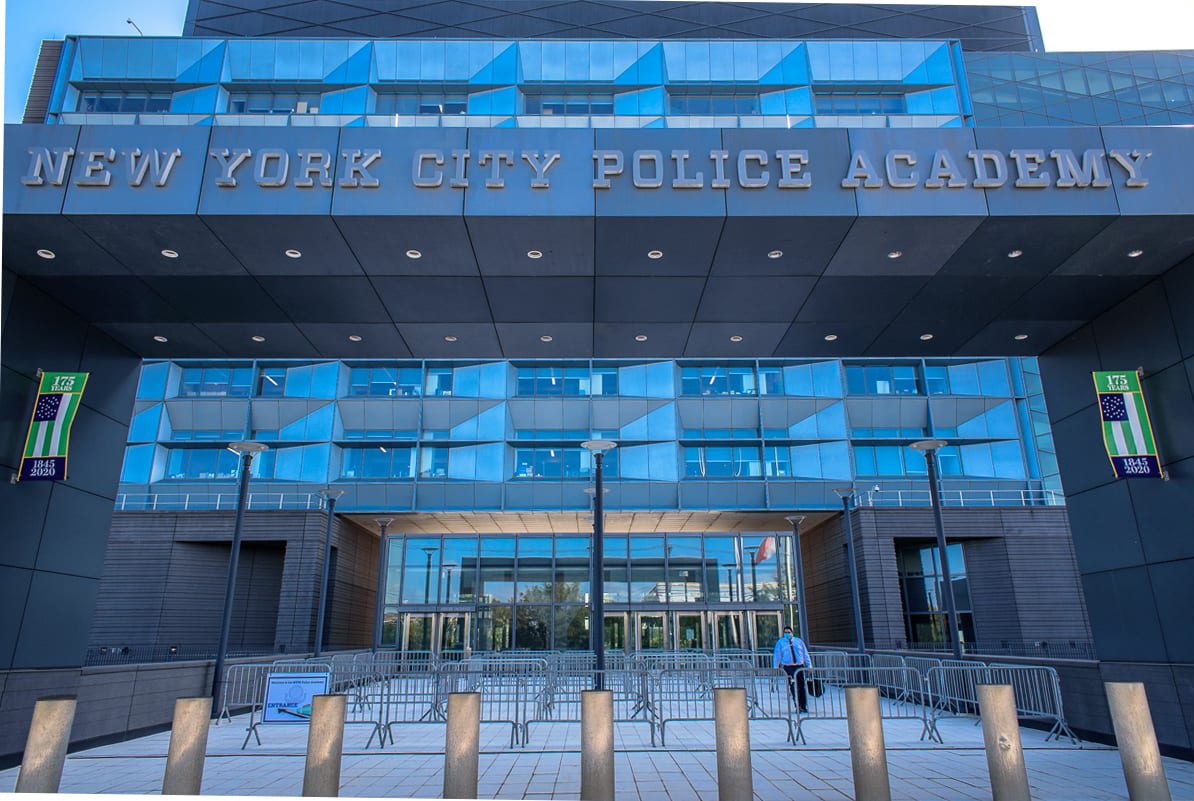
So you’re ready to become a police officer? Not quite yet, cadet. Before you can do anything, you’re going to need some training, and what else than the police academy to teach you all everything you need for law enforcement.
Police academies train cadets on skills and tactics required to properly and effectively conduct their duty. This includes legal training, driving skills, equipment and firearms training, use of force, crisis negotiation, and de-escalation amongst others. Police academies typically include facilities such as classrooms, vehicle courses, shooting ranges, gyms, and some recreational facilities. Larger academies may include dorms, cafeterias, simulators, and affiliated businesses and restaurants.

In the United States, police academies exist in every state and at the federal level. Most states have minimum physical and academic requirements that need to be completed before entry into the academy (e.g. decent fitness and a high school diploma or GED). Required time training can range between 360 hours (Louisiana) and 1,120 (Washington D.C.). General requirements can be looked up based on your lore’s location. Federal agencies require agents, officers, and perspectives to attend basic and in-service training at one of the four Federal Law Enforcement Training Center (FLETC) sites across the country.
Whilst the above is typical curricula one can expect, training can vary widely from state to state and department to department. Many police academies didn’t until 2014 and still don’t offer crisis intervention and de-escalation training. Some departments may offer this of their own resolve, but many do not because of lack of funding or trained instructors, and cultural attitudes among police and police leaders. In other cases, pseudoscience, assumptions and misinformation can underpin some dubious police practices and training, such as the “21-foot Tueller Drill”, or analyzing micro expressions to determine if someone is lying or telling the truth, which can lead to false arrests and even injury or de-ath to suspects and officers.
Standards on firearms training vary wildly; most officers do not receive training sufficient to handle firearms in real-world scenarios. After initial graduation from police academy, most officers are tested for firearms proficiency once or twice annually, and their firearms skills degrade rapidly. In many cases, this has led to accidental shootings, some with injuries and death. This same deterioration is common with use-of-force techniques and melee combative skills.
With that said, upon your graduation from your police academy, you will be sworn in as a police officer and assigned to your unit and ‘beat’. Note that hands on training will continue from here on, rookie.

So you’re ready to become a police officer? Not quite yet, cadet. Before you can do anything, you’re going to need some training, and what else than the police academy to teach you all everything you need for law enforcement.
Police academies train cadets on skills and tactics required to properly and effectively conduct their duty. This includes legal training, driving skills, equipment and firearms training, use of force, crisis negotiation, and de-escalation amongst others. Police academies typically include facilities such as classrooms, vehicle courses, shooting ranges, gyms, and some recreational facilities. Larger academies may include dorms, cafeterias, simulators, and affiliated businesses and restaurants.

In the United States, police academies exist in every state and at the federal level. Most states have minimum physical and academic requirements that need to be completed before entry into the academy (e.g. decent fitness and a high school diploma or GED). Required time training can range between 360 hours (Louisiana) and 1,120 (Washington D.C.). General requirements can be looked up based on your lore’s location. Federal agencies require agents, officers, and perspectives to attend basic and in-service training at one of the four Federal Law Enforcement Training Center (FLETC) sites across the country.
- Past Background - Before you’re allowed to step foot into an academy, background checks and other prerequisite tests will be conducted. Note that if your character has been convicted of a felony, even if it’s been expunged, they will not be able to become a police officer. Juvenile convictions and misdemeanor convictions usually are not automatically disqualifying. Typically if a selection board deems you are not of “good moral character”, you will be denied employment as a police officer.
- Cost and Length - Usually you will be paid whilst at the academy; you’ve already been hired as a police officer, and the academy is part of your new job. Typically the average length of academy is around 800 hours, which can take around five or six months to complete.
- Curriculum- Academic material is broad, ranging from criminal law, report writing, courtroom testimony, patrol theory and operations, first aid, use of force, safe driving, and firearms training, and excessive force by fellow officers.
- Police Strategy- Large component of academy training
- Legal knowledge: Learning state ordinances, local laws, and constitutional law. Recruits will also learn about the basic functions and processes of the legal system.
- Procedure: Education about accident and incident investigations, incident reporting, traffic control and radio operation. Recruits will also learn about vehicle operations focused on operating police cruisers.
- Apprehension and arrest: Strategies for the most effective apprehension of criminals. This module will also cover techniques for apprehension to minimize potential legal challenges.
- Weapons Training- Cadets will learn how to use non-lethal tools like TASERs, OC spray and collapsible batons and how they should be the first choice when encountering combative individuals
- Cadets will learn about firearms usage and training, including basic functions like drawing your weapon from the holster, aiming, and firing, as well as how to respond to multiple attackers.
- Community Collaboration and Aide- A huge component to public safety is working with your community. You will learn:
- Emergency Aid - CPR, First aid, and communication skills
- Civil rights issues
- Negotiation techniques
- Communication strategies
- Basic criminal psychology
- Mental Toughness- Mental preparation is important. You’ll enter potentially dangerous situations from day one. The academy emphasizes the good of the group over the needs of the individual and will have exercises on:
- Dealing with hostility and violence
- Understanding risk assessment
- Practicing with roleplaying exercises
- Stress training (military) and non-stress training (academic) to handle shifting emotional expectations
- Physical Training- Cadets will undergo a variety of exercises to measure physical fitness. In addition to building muscle and stamina, most academies also require cadets learn close combat fighting techniques and defensive techniques
- Disable and restrain multiple attackers, including when they hold knives, blunt weapons, or chemicals.
- Some, like California’s Police Academy, require the completion of a physical agility test prior to admission. Usually these include
- 99-yard obstacle course
- 32-foot body drag (165 lbs)
- 6-foot chain link fence climb
- 6-foot solid wall climb
- 500-yard sprint
- 1.5 mile run
- Police Strategy- Large component of academy training
Whilst the above is typical curricula one can expect, training can vary widely from state to state and department to department. Many police academies didn’t until 2014 and still don’t offer crisis intervention and de-escalation training. Some departments may offer this of their own resolve, but many do not because of lack of funding or trained instructors, and cultural attitudes among police and police leaders. In other cases, pseudoscience, assumptions and misinformation can underpin some dubious police practices and training, such as the “21-foot Tueller Drill”, or analyzing micro expressions to determine if someone is lying or telling the truth, which can lead to false arrests and even injury or de-ath to suspects and officers.
Standards on firearms training vary wildly; most officers do not receive training sufficient to handle firearms in real-world scenarios. After initial graduation from police academy, most officers are tested for firearms proficiency once or twice annually, and their firearms skills degrade rapidly. In many cases, this has led to accidental shootings, some with injuries and death. This same deterioration is common with use-of-force techniques and melee combative skills.
With that said, upon your graduation from your police academy, you will be sworn in as a police officer and assigned to your unit and ‘beat’. Note that hands on training will continue from here on, rookie.
2.2 Your Division and Unit!
So you're a rookie cop and you’re wondering where you’re going to be working? Well, that can depend on a number of factors, starting with the type of division/section you’re placed under. If you’re playing a typical ‘beat’ cop and want to skip these, the patrol/field operations division is expected for you. Otherwise, the typical divisions in a department may include:
Assuming your officer is working in a patrol/field operations division, there are a number of common units he/she may be a part of. These can include:
So you're a rookie cop and you’re wondering where you’re going to be working? Well, that can depend on a number of factors, starting with the type of division/section you’re placed under. If you’re playing a typical ‘beat’ cop and want to skip these, the patrol/field operations division is expected for you. Otherwise, the typical divisions in a department may include:
- Administration Division - This division coordinates activities of all divisions in the police department. The Chief’s Office falls under this division, as well as Administrative Services, Event Planning, and Counter terrorism. This division is responsible for planning and staffing sponsored and privately funded events in the community.
- Patrol/Field Operations Division - This division is responsible for responding to calls for service and crime prevention. They can consist of specialized units, such as K-9 and SWAT.
- Criminal Investigation Division (CID) - This division is responsible for investigations of initial police reports, illegal narcotics networks, and combating illegal and prohibited activities.
- Strategic Services Division - This division is responsible for 9-1-1 services, monitoring radio comms, managing evidence, crime analysis, fleet management, and non-emergency support services.
- Community Relations Division - This division is responsible for providing the public with information, programs, presentations, and special events intended to serve the community. They also serve to address public concerns on different issues.
- Air Operations Division - This division provides aerial patrol response to emergency calls for service and traffic monitoring by assisting officers on the ground from its airborne platform.
- Marine Operations Division - (Where Applicable) This division patrols waterways and possesses water related skills and equipment, responding for calls of service and other incidents along local waterways.
Assuming your officer is working in a patrol/field operations division, there are a number of common units he/she may be a part of. These can include:
- Patrol Unit - Can be a footbeat officer, bike patrol officer, motorcycle patrol officer, or patrol car officer
- Traffic Unit
- K-9 Unit - You get a dog! Use it to chase down criminals or sniff out narcotics.
- Mounted Unit - You get a horse. Neigh.
- Marine and Helicopter Unit
- Special Weapons and Tactics (SWAT) Unit
2.3 Your Equipment and You, Police Style
You may be wondering what you’re going to be issued with in the field. We’ll discuss some of the more common pieces of equipment an officer can be expected to have on hand, starting with an officer’s duty belt.
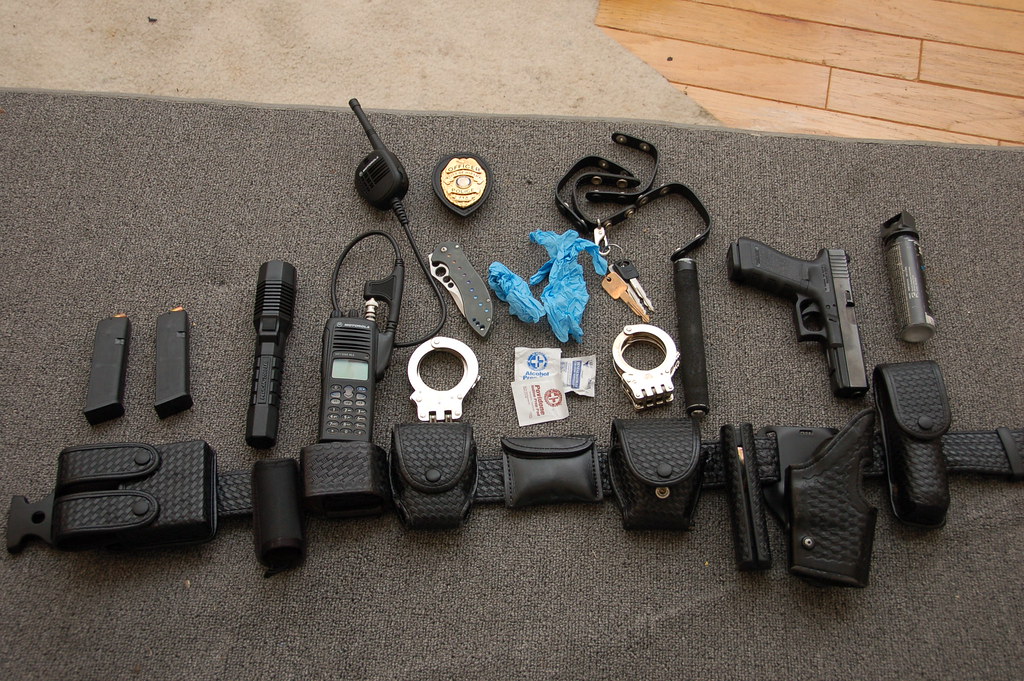
A police duty belt is a belt made of nylon or leather used to carry equipment for quick and easy access, leaving the hands free to interact. It can be used to carry any number of useful items, from handcuffs to a service weapon.
Initiatives to further police accountability in the 2000s and 2010s led adoption in several states of police body worn cameras. As of 2023, their usage is only mandated by several states, and even then, there are instances where officers fail to activate them. Arguments on whether they work or not continue today.
Firearms and American law enforcement go hand in hand. In a nation where every citizen has the right to bear arms, it goes without saying that police officers expect the capability to counter violent criminals that make use of guns. Your average police officer is required to be armed both on and off-duty. Until the late 1980s and early 1990s, most police officers carried revolvers, usually Smith & Wessons or Colts in .38 Special or .357 Magnum calibers. Since then, police departments switched over to semi-automatic pistols in 9x19mm, .40 S&W, and .45 ACP, offering increased capacity and higher firing rate. Some commonly carried models include:
In comparison to normal police officers, special weapons and tactics (SWAT) units are given much more firepower to handle the larger, more deadly threats they’re called in to combat. These units can make use of submachine guns, automatic rifles, combat shotguns, sniper rifles, stun and smoke grenades, and other specialized weapons and equipment to accomplish the task at hand.
Finally, police use a wide range of vehicles in their duties. Police vehicles are used for patrol, responses, pursuits, and generally carry much of an officer’s equipment, including tools and communications devices. Police vehicles in the US traditionally come from Ford, General Motors, and Chrysler Group (or Stellantis, if post 2021). Below, common police vehicles and years of common usage will be listed:
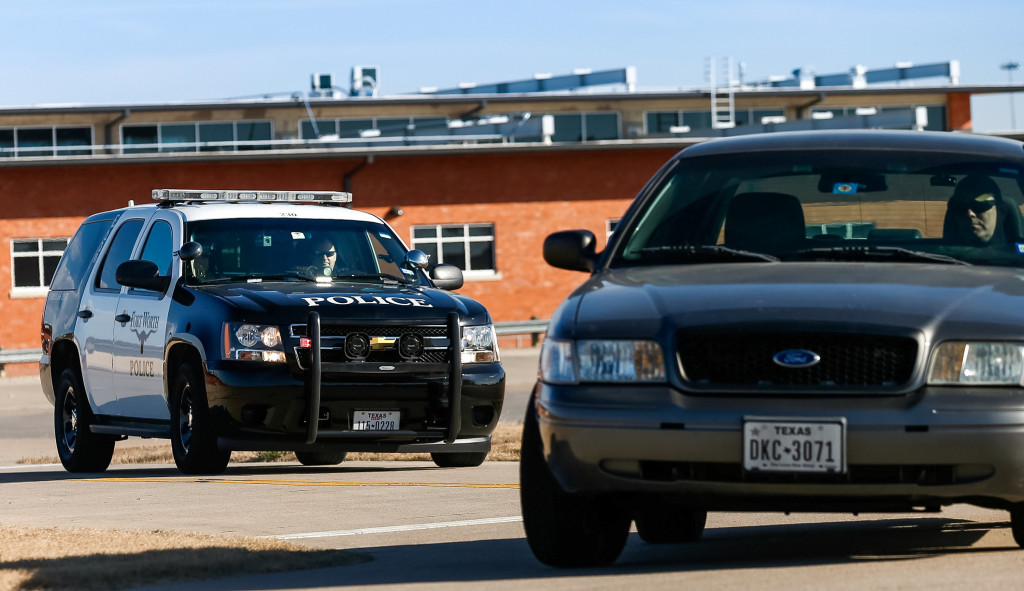
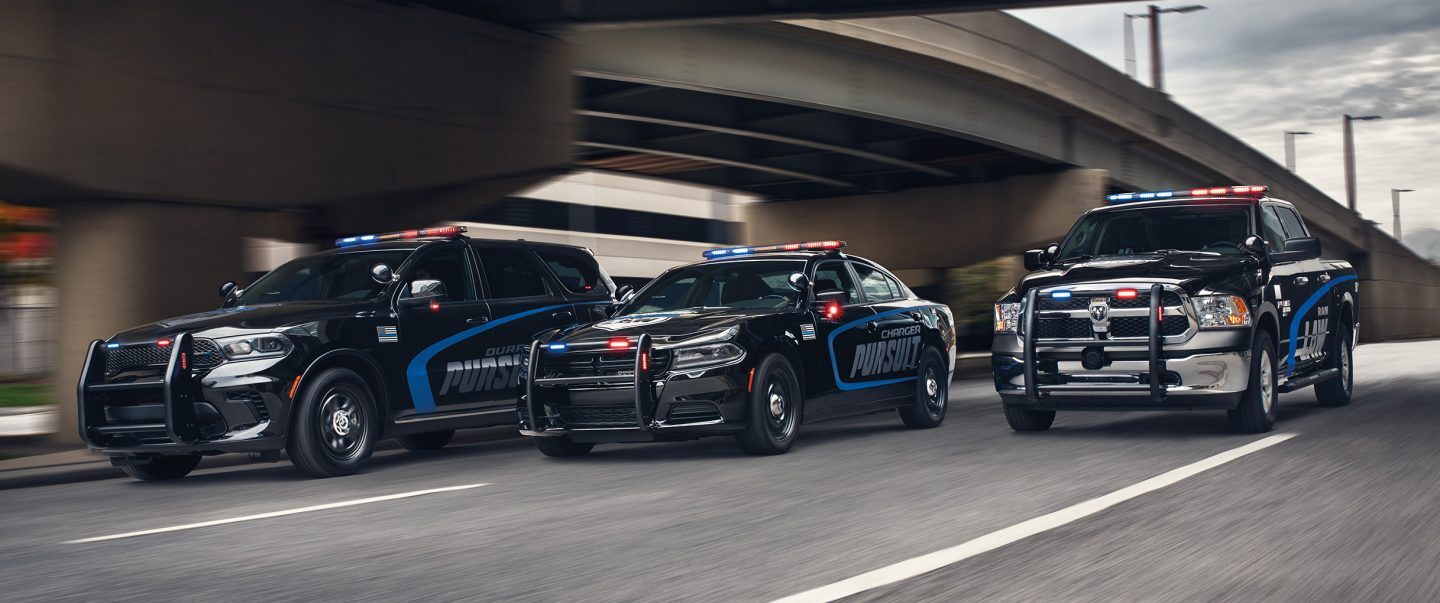
You may be wondering what you’re going to be issued with in the field. We’ll discuss some of the more common pieces of equipment an officer can be expected to have on hand, starting with an officer’s duty belt.

A police duty belt is a belt made of nylon or leather used to carry equipment for quick and easy access, leaving the hands free to interact. It can be used to carry any number of useful items, from handcuffs to a service weapon.
- Handgun Holster - The holster securely holds your firearm. There may be a cord attached to the firearm to prevent theft of the weapon.
- Radio Pouch - The radio pouch securely holds your portable radio or handheld transceiver. In many cases, an external microphone is plugged into the radio and clipped into the officer’s shirt to allow for quick and easy call-ins to dispatch or other units.
- Handcuffs - Handcuffs can be carried on different locations on the belt. Chain linked handcuffs have a wider range of motion, able to rotate and tilt, and are used on a suspect during an arrest.
- Chemical Spray - Aerosol chemical irritants are commonly carried. They’re also known as pepper spray or mace. These are a non-deadly method to potentially stop a violent or hostile individual. In the past, these were not carried alongside a taser, due to concerns of safety (ignition of spray propellant) and limited belt space.
- TASER - Tasers grew to prominent police use in the 90s and were practically universal amongst police forces by the mid 2000s as a less-lethal weapon. The taser incapacitates people by shooting two small barbed darts into the target’s skin and delivers an electric current to down the target. Some problems faced by tasers are the risk that the barbs may not connect or penetrate thicker clothing, or that if used improperly, it’s possible to cause serious injury or death.
- Portable flashlight - You may carry one or two flashlights on their person. Large, long flashlights can be held onto a belt with a flashlight ring, whilst smaller, secondary flashlights usually clip onto the belt.
- Magazine Pouch - This carries spare magazines or speedloaders (for revolvers) to reload your handgun. Typically an officer carries two spare magazines.
- Baton - A baton holder can hold your baton/nightstick to your belt. Batons can be fixed or extendable. They can be used to block, strike, jab, or bludgeon. They can also be used for non-weapon purposes, such as breaking windows or turning our suspect’s pockets. They may also be referred to as a truncheon or billy club.
- Disposable Gloves - Nitrile or latex disposable gloves are useful when handling infected subjects, rendering first aid, or making an arrest. They can also help protect evidence at a crime scene. If there is no space on the belt for a glove pouch, they can be stored in the pockets.
- Knife or Multitool - Knives and multitools are useful in a variety of situations, whether it be in self-defense, cutting car seat belts to help remove injured from a motor vehicle, or assemble or disassemble some items in the field.
- First Aid Kit - Some officers may carry a small first aid kit on their belt, though it is common to keep such equipment inside their patrol car. Some patrol cars may even receive automatic external defibrillators.
Initiatives to further police accountability in the 2000s and 2010s led adoption in several states of police body worn cameras. As of 2023, their usage is only mandated by several states, and even then, there are instances where officers fail to activate them. Arguments on whether they work or not continue today.
Firearms and American law enforcement go hand in hand. In a nation where every citizen has the right to bear arms, it goes without saying that police officers expect the capability to counter violent criminals that make use of guns. Your average police officer is required to be armed both on and off-duty. Until the late 1980s and early 1990s, most police officers carried revolvers, usually Smith & Wessons or Colts in .38 Special or .357 Magnum calibers. Since then, police departments switched over to semi-automatic pistols in 9x19mm, .40 S&W, and .45 ACP, offering increased capacity and higher firing rate. Some commonly carried models include:
- Glock 19 (9x19)
- Glock 22 (.40)
- Smith & Wesson M&P 9 (9x19)
- Beretta 92 (9x19)
- Sig Sauer P226 (9x19)
- Colt M1911 (.45 ACP)
In comparison to normal police officers, special weapons and tactics (SWAT) units are given much more firepower to handle the larger, more deadly threats they’re called in to combat. These units can make use of submachine guns, automatic rifles, combat shotguns, sniper rifles, stun and smoke grenades, and other specialized weapons and equipment to accomplish the task at hand.
Finally, police use a wide range of vehicles in their duties. Police vehicles are used for patrol, responses, pursuits, and generally carry much of an officer’s equipment, including tools and communications devices. Police vehicles in the US traditionally come from Ford, General Motors, and Chrysler Group (or Stellantis, if post 2021). Below, common police vehicles and years of common usage will be listed:

- Dodge Diplomat Police Package (Mid 1970s - Mid 1980s)
- Chevrolet Impala (Early 1980s - Late 1980s)
- Chevrolet Caprice (Late 1980s - early 2000s)
- Ford Crown Victoria/Crown Victoria Police Interceptor (Mid 1990s - late 2010s)
- Chevrolet Tahoe (Mid 1990s - Current)
- Dodge Charger Pursuit (Mid 2000s - Current)
- Ford Taurus/Police Interceptor Sedan (Early 2010s - Early 2020s)
- Ford Explorer/Police Interceptor Utility (Early 2010s - Current)
- Dodge Durango Pursuit (Early 2010s - Current)

2.4 Communication, Radio, and Ten Codes
“9-1-1, what’s your emergency?”
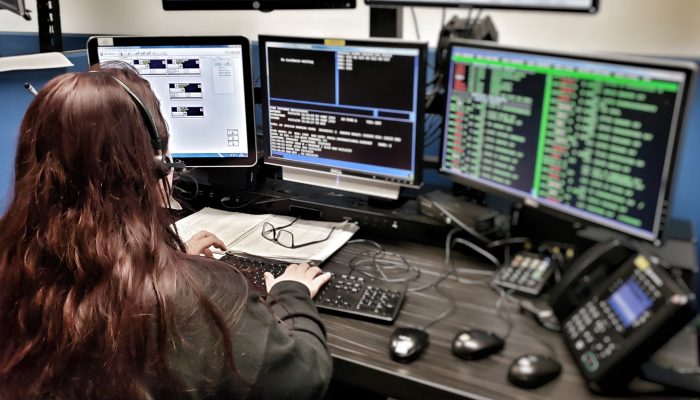
In those instances where the seconds matter, knowing how to quickly and understandably relay information to dispatch and other units can be the difference between life and death. Fumbling with your radio and trying to remember the proper radio codes only wastes those precious seconds (though luckily as a roleplayer you can just keep a page with ten codes open). So let’s get into your radio and you.
Most American police departments are dispatched from a centralized comms center, using very high frequency (VHF), ultra high frequency (UHF), or digitally trunked radio transceivers mounted in their vehicles. Recently, police vehicles are increasingly equipped with portable computers linked by radio to a database with access to state DMV info, criminal records, and other important info.
Most police communications are conducted within a pool of dispatchers, who take 9-1-1 calls and relay both that information and information from one unit to another. When responding to an incident, whether it’s something as small as helping a citizen stuck on the side of the road to responding to a mass shooter incident, you MUST call it in. Doing makes sure that the department knows something is going on and can assess whether or not other units should be sent in as backup.
A famous method of relaying information is called “Ten-Code”. You’ve likely heard it in movies when an officer says “10-4” or “We have a 10-34 in progress.” Ten-code is still popular with police departments today, though it is gradually being phased out in favor of “plain language” communication for clarity of communications, and because of lack of standardization. Different departments could use the same code but mean different things, leading to confusion, especially if officers from other departments or state and federal agencies become involved. Generally a mixture of ten-code and plain language is fine.
A full guide on radio communication can be found here and here, but below I will list some general rules to radio communication, followed by the basic radio code and the ten-code system.
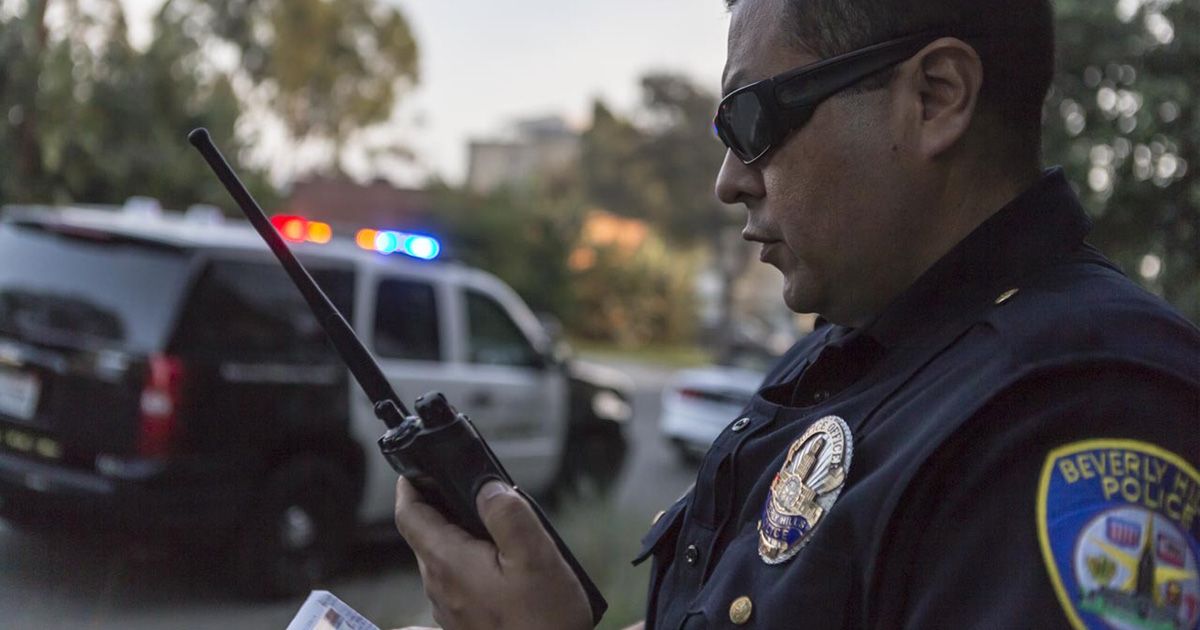
General Radio Guidelines
Ten-Code System - Full List can be found here and here, most common or useful codes listed below.
Phonetic Alphabet - Although police departments use a phonetic alphabet similar to the military and NATO phonetic alphabet, theirs is somewhat different. However, depending from person to person (say, the officer previously served in the military), it’s not uncommon to also hear the NATO phonetic alphabet. The benefit of the PD’s phonetic alphabet is it requires fewer syllables for many letters (which is less necessary in a country where everyone speaks English). Both are included below for comparison.

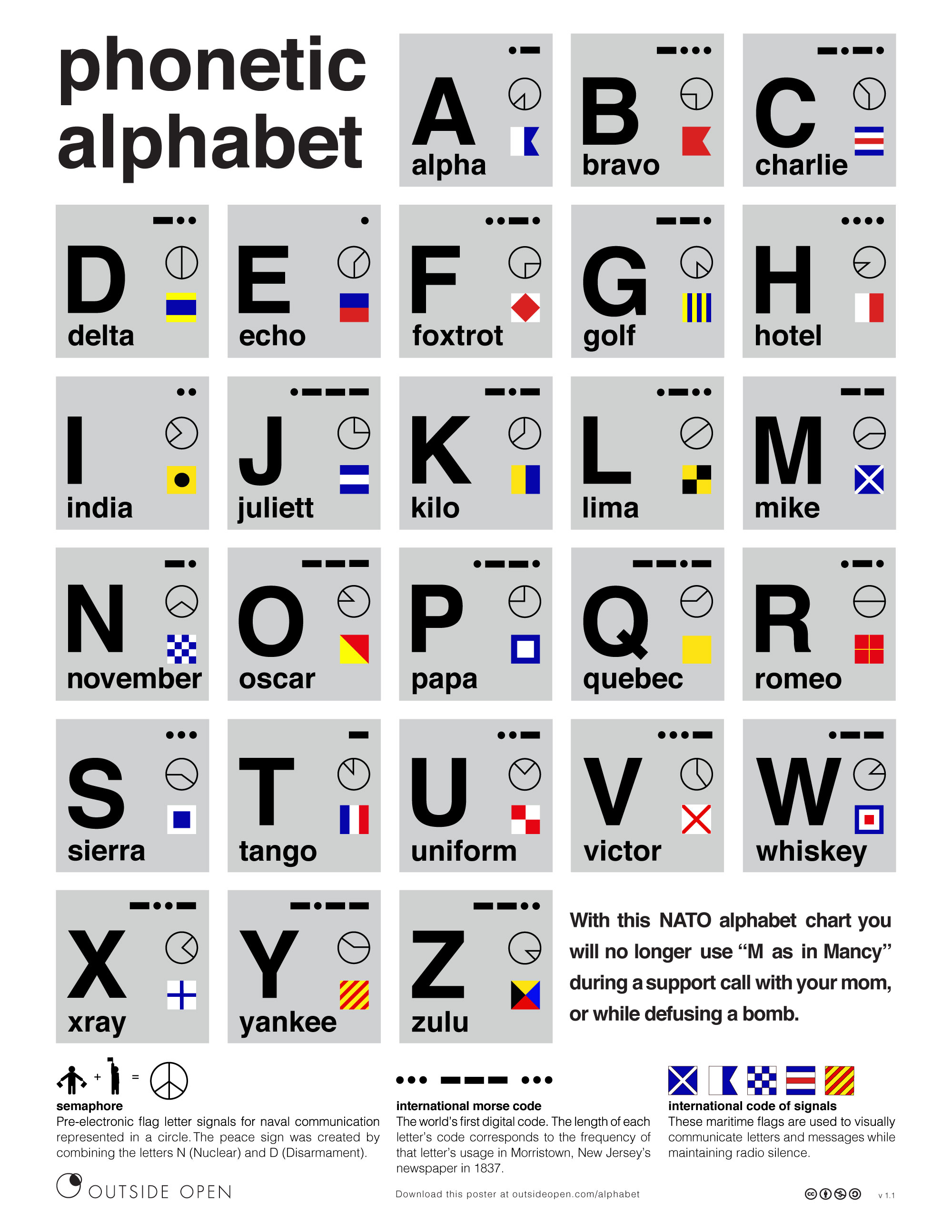
“9-1-1, what’s your emergency?”

In those instances where the seconds matter, knowing how to quickly and understandably relay information to dispatch and other units can be the difference between life and death. Fumbling with your radio and trying to remember the proper radio codes only wastes those precious seconds (though luckily as a roleplayer you can just keep a page with ten codes open). So let’s get into your radio and you.
Most American police departments are dispatched from a centralized comms center, using very high frequency (VHF), ultra high frequency (UHF), or digitally trunked radio transceivers mounted in their vehicles. Recently, police vehicles are increasingly equipped with portable computers linked by radio to a database with access to state DMV info, criminal records, and other important info.
Most police communications are conducted within a pool of dispatchers, who take 9-1-1 calls and relay both that information and information from one unit to another. When responding to an incident, whether it’s something as small as helping a citizen stuck on the side of the road to responding to a mass shooter incident, you MUST call it in. Doing makes sure that the department knows something is going on and can assess whether or not other units should be sent in as backup.
A famous method of relaying information is called “Ten-Code”. You’ve likely heard it in movies when an officer says “10-4” or “We have a 10-34 in progress.” Ten-code is still popular with police departments today, though it is gradually being phased out in favor of “plain language” communication for clarity of communications, and because of lack of standardization. Different departments could use the same code but mean different things, leading to confusion, especially if officers from other departments or state and federal agencies become involved. Generally a mixture of ten-code and plain language is fine.
A full guide on radio communication can be found here and here, but below I will list some general rules to radio communication, followed by the basic radio code and the ten-code system.

General Radio Guidelines
- Transmit only in the performance of duty (ie, when engaging or responding to an incident)
- Always begin transmissions by identifying your unit number so dispatch and other police units know who is speaking. (ex. “This is Six Eight, got a domestic disturbance call.)
- Keep messages short and to the point.
- Person-to-person radio communication using individual names is prohibited. The Federal Communications Commission (FCC) prohibits this.
- Do not conduct car-to-car transmissions unless required by necessity. If possible, request permission from dispatcher prior to initiating car-to-car contact.
- Keep dispatchers informed of any change of location while on assignment. Should officers require assistance, the dispatcher will direct responding units to the last known location of the unit requesting assistance.
- Do not remain in areas where radio perception is poor – the radio is only useful when it works.
- Do not transmit lengthy messages to the dispatcher. Others will be denied the use of air time. Contact dispatcher by telephone if lengthy disposition is required.
Ten-Code System - Full List can be found here and here, most common or useful codes listed below.
- 10-1 - Receiving Poorly, Signal Weak
- 10-4 - Acknowledged/Affirmative/Message Received
- 10-8 - In service (e.g. “Attention patrols, got a report of a Code 6 driver being followed by police at high speed, if you’re a 10-8, get rolling please.”)
- 10-9 - Say again/repeat
- 10-20 - Reporting your location (e.g. “10-20 is uhh, on the corner between West Slaughter and Manchaca Road, dispatch”)
- 10-26 - Detaining suspect
- 10-31 - Crime in progress
- 10-32 - Person with gun
- 10-33 - Emergency, all units stand by
- 10-43 - In pursuit
- 10-52 - Ambulance needed
- 10-57 - Hit and run
- 10-77 - Estimated Time of Arrival ETA (e.g. “10-77 is seven or eight minutes.”)
- 10-78 - Need assistance
Phonetic Alphabet - Although police departments use a phonetic alphabet similar to the military and NATO phonetic alphabet, theirs is somewhat different. However, depending from person to person (say, the officer previously served in the military), it’s not uncommon to also hear the NATO phonetic alphabet. The benefit of the PD’s phonetic alphabet is it requires fewer syllables for many letters (which is less necessary in a country where everyone speaks English). Both are included below for comparison.


2.5 D.O.A.
Getting wounded sucks, end of story.
Getting killed sucks even more.
Firearms are a fairly common item in the United States, both with law abiding citizens and with criminals alike. Although you may never face a violent incident involving a firearm, police departments place a heavy emphasis on this and use it in their training programs. Of course, this is far from the only threat you may face as a law enforcement officer, with potential threats including moving motor vehicles, and bladed or blunt weapons.
(To explain a bit about roleplaying gunshot injuries, I’m going to knick what I wrote from my military roleplaying guide)
There's no real way to understand what a gunshot feels like without having gone through it. However, one can base their responses on the descriptions of those who have. Important things to consider are:
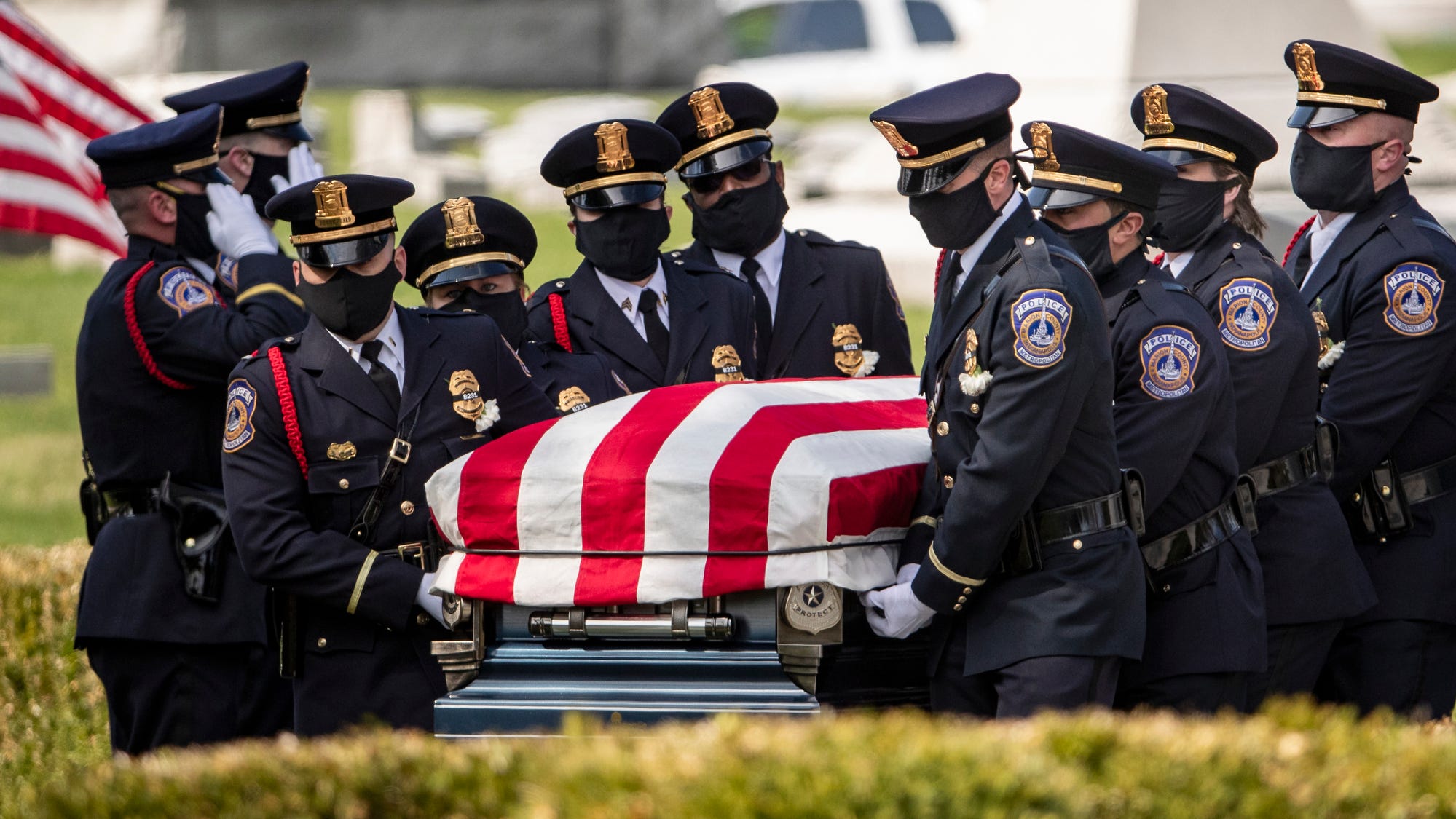
When an officer dies, it is often customary to issue a 10-42 code at their funeral. 10-42 indicates an officer’s end of tour, and is most often used when an officer retires from the force. In accordance with tradition, at the end of funeral proceedings, a dispatcher will call the officer’s badge number three times, asking the officer to respond. Having received no response, the dispatcher the officer is now ‘10-42’, giving the date on which the officer ended his or her tour of duty.
Getting wounded sucks, end of story.
Getting killed sucks even more.
Firearms are a fairly common item in the United States, both with law abiding citizens and with criminals alike. Although you may never face a violent incident involving a firearm, police departments place a heavy emphasis on this and use it in their training programs. Of course, this is far from the only threat you may face as a law enforcement officer, with potential threats including moving motor vehicles, and bladed or blunt weapons.
(To explain a bit about roleplaying gunshot injuries, I’m going to knick what I wrote from my military roleplaying guide)
There's no real way to understand what a gunshot feels like without having gone through it. However, one can base their responses on the descriptions of those who have. Important things to consider are:
- The caliber of the round hitting your character
- Getting hit by .22LR is generally not going to be as lethal or fatal as being hit by 7.62x51 or .50 BMG. While it is possible to be killed by a single .22LR round, it is far less likely to happen compared to a larger caliber round.
- I'm not going to go into ballistic science and how the wounds .223/5.56 produces may be different than another caliber, but general rule of thumb is that the larger the round, the more damage it does to the body, and the more likely you are to be incapacitated and/or killed by a single shot outright.
- The level of adrenaline running through your body
- Adrenaline's the magic drug, and it's going to change how you respond to pain. Many combat veterans will say that a firefight is the biggest adrenaline high one can get, with cases where those pumped with adrenaline were able to take multiple rounds to the body and continue fighting.
- Sometimes the pain may be negligible or you may not even feel it. But once that adrenaline fades, you're really going to feel it.
- Adrenaline's the magic drug, and it's going to change how you respond to pain. Many combat veterans will say that a firefight is the biggest adrenaline high one can get, with cases where those pumped with adrenaline were able to take multiple rounds to the body and continue fighting.
- Whether your character is wearing ballistic body armor
- If you're wearing body armor and get shot (and the round doesn't go through), typically you will stumble from the force of the round. As someone that has been shot by a 9mm whilst wearing body armor, all of that kinetic energy stops suddenly, dispersing it across the vest. This means you're basically transforming a gunshot wound into a blunt trauma wound. The wind will likely be knocked out of you, you may stumble onto your ass, and you are going to feel like you've been slammed with a baseball bat, full force, where you were hit. (And that was just 9mm).
- Note that adrenaline still plays a role in this, so you may be able to tank the round.
- Without body armor, the round may gradually slow down within you or penetrate straight through (which allows the kinetic energy to dissipate), which means you may potentially not go through as much initial pain.
- Body armor is there to save your life. You may be incapacitated for at least a few minutes after taking a hit. But you will be alive.
- A Guide to NIJ Ballistic Body Armor Classes
- NOTE that Class III Body armor will generally NOT stop 5.56x45(AR15/M16) or 5.45x39(AK74) at close ranges. It will stop 7.62x51(M14/FAL/G3) or 7.62x39(SKS/AK47/AKM), but because of the velocity of the above rounds, it will not stop these rounds. It is a myth due to the NIJ that's been perpetuated for decades.
- This visual chart shows modern body armor classes that WILL stop 5.56 or 5.45. Keep this in mind when you're roleplaying ballistic body armor.
- If you're wearing body armor and get shot (and the round doesn't go through), typically you will stumble from the force of the round. As someone that has been shot by a 9mm whilst wearing body armor, all of that kinetic energy stops suddenly, dispersing it across the vest. This means you're basically transforming a gunshot wound into a blunt trauma wound. The wind will likely be knocked out of you, you may stumble onto your ass, and you are going to feel like you've been slammed with a baseball bat, full force, where you were hit. (And that was just 9mm).
- What and where you’ve been hit
- A shot to vital body parts (such as the heart, lungs, or gut) or to the head are far more likely to incapacitate or outright kill a person than a shot to the arm or leg.
- Artery severage is probably the most dangerous, especially when the man or woman is high on adrenaline, as they may not notice the wound until it’s too late. There are many arteries in the lower legs and arms, for example, so even if you only hit the leg, there’s a potential to sever an artery and cause massive bleeding.
When an officer dies, it is often customary to issue a 10-42 code at their funeral. 10-42 indicates an officer’s end of tour, and is most often used when an officer retires from the force. In accordance with tradition, at the end of funeral proceedings, a dispatcher will call the officer’s badge number three times, asking the officer to respond. Having received no response, the dispatcher the officer is now ‘10-42’, giving the date on which the officer ended his or her tour of duty.
Last edited:

